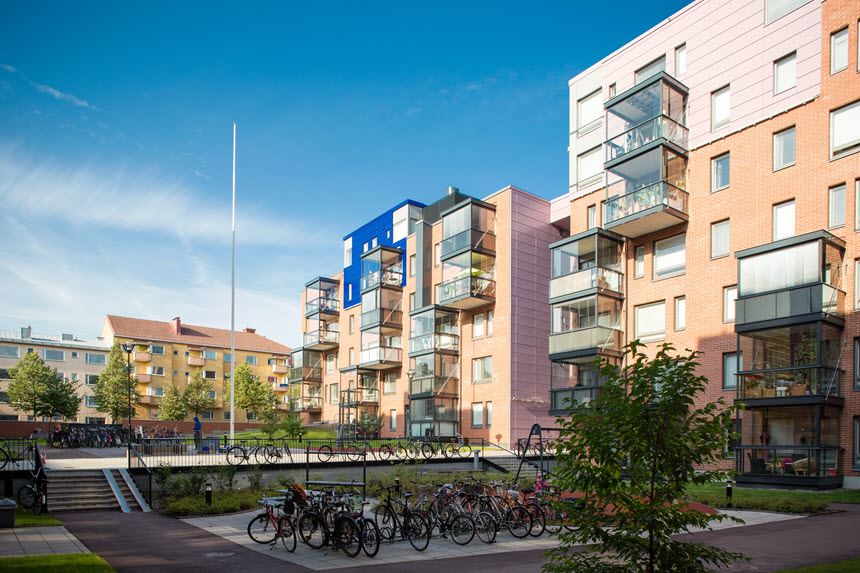Sustainable data centers as a service
This is what YIT is doing to prevent climate change
YIT’s target is to halve emissions from its own operations and self-developed projects in the next 10 years.

Global warming is one of the biggest challenges that humankind is facing. To promote the mitigation of climate change, YIT has set ambitious targets to reduce its emissions.
One of the targets is that YIT promises to calculate the carbon footprint of its self-developed projects as of 2020. But what does this mean in practice?
“We want to understand the environmental impact caused by our projects and make planning decisions that reduce this impact. Calculating our carbon footprint is essential to increase our competence and understanding. It also functions as a tool to help us achieve our climate goals,” describes Development Manager Elina Virolainen from YIT.
YIT has selected Bionova Ltd.’s OneClick LCA calculation programme as its tool, which it started using in autumn 2019. YIT’s personnel has been trained to use the programme. The carbon footprint of each new self-developed project will be calculated as of spring 2020. The calculation is primarily carried out internally — first, as a rough estimate, and in more detail later.
“We wanted to increase our own capability and readiness to utilise the results of the carbon footprint calculations in our project planning. This is why we chose an independent route for our calculation,” reasons Virolainen.
The implementation of the calculation process has proceeded swiftly, and YIT has already started carbon footprint calculations for over 20 projects in their planning stages. Eight calculations have already been completed. One of the calculated projects is As Oy Lappeenrannan Rantala, which is under construction in Lappeenranta.
“We carried out a rough carbon footprint calculation according to YIT’s instructions. I was responsible for the calculation, and the first round only took a couple of hours. It has been interesting to learn about this side of the project and see the effect materials and other design solutions can have on our environmental impact. The results are easy to read, and you can concretely see what and how we can impact. I feel proud that YIT has set strategic targets to halve its emissions,” declares Project Engineer Niko Junna from YIT.
In addition to the rough calculation in the planning phase, a detailed carbon footprint calculation is carried out when a project moves from planning to production. The detailed calculation in Finland follows the Ministry of the Environment’s calculation instructions, whereas other YIT countries follow the EU’s Level(s) model.
Cooperation and innovations ensure the achievement of YIT’s climate goals
The carbon footprint calculation is a tool which helps to understand the biggest sources of emissions in a project. However, it does not reduce emissions in itself.
“YIT’s target is to halve emissions from its own operations and self-developed projects in the next 10 years. To achieve this goal, we must understand where our emissions come from. Because of this, it is of utmost importance that we calculate the carbon footprint of our projects. Calculation and procurement cooperate closely so that we can achieve the objectives we have set. The challenge is great, and it also requires development of building materials and the entire industry,” Virolainen explains.
One example of alternative production methods and construction materials is timber-based module construction. YIT started constructing the first wooden apartment building of its history in early 2020. The building is constructed of modules and will be completed in Hervanta, Tampere in summer 2020.



